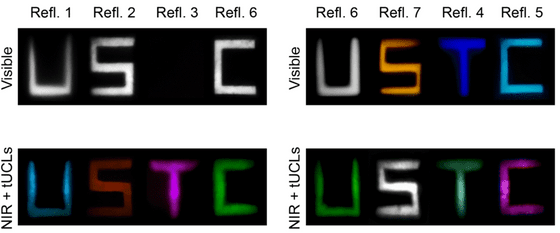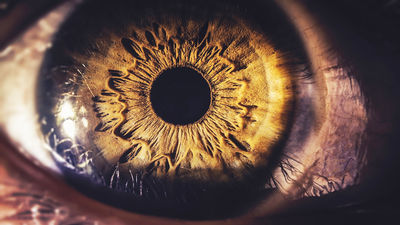Contact lenses that allow you to see infrared rays are developed

Chinese researchers have announced a contact lens that allows people to see infrared light even in the dark or with their eyes closed by converting wavelengths of light that are normally invisible to humans into visible light.
Near-infrared spatiotemporal color vision in humans enabled by upconversion contact lenses: Cell
Infrared contact lenses allow people to see in the dark, even with their eyes closed | EurekAlert!
https://www.eurekalert.org/news-releases/1084046?
Revolutionary Contact Lenses Let Human Eyes See Invisible Light : ScienceAlert
https://www.sciencealert.com/revolutionary-contact-lenses-let-human-eyes-see-invisible-light
Night vision devices, first used in nighttime battles during World War II, amplify faint light or visualize infrared light to ensure visibility in the dark. However, most such night vision devices require a power source and are heavy and bulky. In the past, mice were successfully given near-infrared vision by injecting special nanoparticles under their retinas, but such surgical procedures have not been widely applied to humans.
Successfully modified mouse eyes to see invisible infrared light by injecting nanoparticles into them - GIGAZINE

To develop a non-surgical technique to enable infrared vision, the researchers embedded nanoparticles in a flexible polymer often used in soft contact lenses. Made of sodium gadolinium fluoride, which contains ytterbium, erbium and gold, materials commonly used in optics, the nanoparticles are able to absorb near-infrared light with wavelengths between 800 and 1,600 nanometers and convert it into visible light with wavelengths between 380 and 750 nanometers.
When mice were fitted with the upconversion contact lenses (UCLs) developed in this way, they avoided the infrared-illuminated box and preferred to enter the dark box. On the other hand, mice without UCLs did not distinguish between the infrared-illuminated and non-illuminated boxes. In addition, mice wearing UCLs showed pupil constriction when exposed to infrared light, and brain scans confirmed that the visual processing center responded to infrared light.
Next, human subjects were given the UCL, and they were able to detect and orient themselves to flashing infrared light. When the subjects closed their eyelids, they could see the infrared light even better. This is because infrared light is more transparent than visible light.
'The results were clear: without contact lenses, subjects could not see anything, but with contact lenses, they could clearly see the infrared flickering,' said Tian Xue, a neuroscientist at the University of Science and Technology of China and lead author of the paper. 'This is because near-infrared light penetrates the eyelids more effectively than visible light, so there is less interference from visible light.'

by Yuqian Ma, Yunuo Chen, Hang Zhao
In tests, text that appeared boring black or white to subjects without the glasses appeared vibrantly colored when wearing the luxury glasses, as infrared wavelengths were converted by the glasses into specific visible wavelengths.

by Yuqian Ma, Yunuo Chen
UCL, which requires no power source and can capture infrared light even with eyes closed, has several potential applications. For example, being able to see blinking infrared light could be used to transmit information in fields such as security, emergency services, encryption, and anti-counterfeiting.
In addition, by adding further improvements to contact lenses, it has become possible to color-code infrared light by wavelength. It is hoped that this technology may be applied to technology that allows people with color blindness to see things that are normally invisible.
The researchers used the same nanoparticles to create glasses that could detect infrared light with higher resolution, but the researchers also used contact lenses to create glasses that could detect infrared light with higher resolution, but the glasses were too close to the retina, making it difficult to see fine details.
The UCL developed this time can currently only detect infrared light emitted by LED light sources, but the research team is working on improving it to increase the sensitivity of the nanoparticles so that they can capture even fainter infrared light.
'Our research opens up the possibility that non-invasive, wearable devices could provide people with supervision,' Xue said.
Related Posts:
in Science, Posted by log1l_ks






